Android Phone Fans |
- Google Search update allows you to call or text family without even speaking their name
- Reddit co-founder loves Android and I’ve got the autographed proof
- Purported Samsung Galaxy S5 box may confirm 2K display, Snapdragon 805, and 20MP camera
- How to find a lost or stolen Android phone [Android 101]
- Galaxy S5 for Sprint shows up in a user agent profile, reports a 1080p display
- Qualcomm Toq smart watch update adds boatload of new features
- HTC M8 leaks again – this one looks like it could be the real deal, folks
- Flappy Bird dev says the game’s addictive qualities motivated its removal, but is that the whole story?
- Sony’s Mobile World Congress press conference set for February 24th
- T-Mobile Moto X first in line for Android 4.4.2 upgrade, brings improved battery life
- Sprint added 58,000 customers in Q4, but lost tons of cash & might rethink buying T-Mobile
- And just like that, Themer is back in the Google Play Store
- $130 Xiaomi Redmi could pack more value than any Android Phone to date
- Is Samsung giving the Galaxy S5 circular icons in revamped TouchWiz UI?
- HTC M8 Mini specs tipped, HTC M8 for Verizon, AT&T, and T-Mobile passes through Bluetooth SIG
| Google Search update allows you to call or text family without even speaking their name Posted: 11 Feb 2014 06:24 PM PST Now, I don’t know about any of you, but the contact I’ve entered in my phone for my mother as simply “Mom Chavez.” In all seriousness, this was so that I could speak the command, “Call Mom” in the Google Search app and it’d know exactly who I was referring to. Starting today, the Google Search app will will allow you to speak commands like “Call Mom” or “Send a text to my wife” — instead of speaking your mother or wife’s full name. Try it out for yourself and the Google Search app will prompt you for some quick setup, asking you to verify your contacts’ relationship status with you. Once set, you’ll be call/texting your brother, mother, father, or other family members with hands-free ease. [Google+] |
| Reddit co-founder loves Android and I’ve got the autographed proof Posted: 11 Feb 2014 04:57 PM PST Late last year I saw Reddit co-founder Alexis Ohanian speak in Baltimore, MD while promoting his book titled Without Their Permission. I’ve got a bit of a Reddit soft spot: it’s the story of an underdog that defeated Digg, their website is stamped with a smiling robot mascot, and Alexis grew up 10 minutes from my childhood home (though I had never met him). Turns out we share a soft spot (and not just Reddit)… check out how he signed my book:
This wasn’t just a playful ploy. Case and point: the dude was wearing Galaxy Gear on his wrist. His talk was relatively interesting and covered all the topics you might expect, from how Reddit started to lessons he learned along the way, followed by a Q&A. The Q&A was diverse, ranging from questions about net neutrality and privacy to local entrepreneurs asking for words of wisdom. I wish I could have edged in some questions about the mobile industry, but didn’t get the chance. I only had a brief minute to chat with him afterwards. I’m sure he’s a fan of technology in general, but being a redditor whose activity has increased drastically over the past couple years, it was fun to hear him speak and delightful to hear about his enthusiasm for Android. I’m eager to hear if anyone else from /r/Android has heard or met Alexis in person and if they’ve had the chance to read his book. You can buy his book Without Their Permission on Amazon for $27. It’s a good read that became a New York Times Best Seller and I wouldn’t be surprised if it hit the front page of Reddit at some point during its run. What questions would you have asked Alexis if you had the opportunity? |
| Purported Samsung Galaxy S5 box may confirm 2K display, Snapdragon 805, and 20MP camera Posted: 11 Feb 2014 04:52 PM PST Subject of much rumor and even more speculation, the Samsung Galaxy S5 continues to be a device shrouded in mystery. We've posted on many of these "leaks" in the past, but rarely do we have any hard evidence to clue us in on exactly what we can expect from the device when it's finally announced. That may have changed today…
We found interesting that, although the box doesn't mention the specific manufacturer of the SoC, the 2.5GHz clock speed seems to imply the S5 will come equipped with a Snapdragon 805, and not the 800 (2.3GHz) we heard about previously. Also, worth noting is the rumored 16MP camera appears to have been bumped to 20MP. We know MP aren't always everything, but hopefully there’s some additional tech to back up the optics. Unfortunately, it looks like only a few of the specs were pictured, leaving out any mention of fingerprint and/or iris scanner for security. Hey, as long as Samsung brings back the IR blaster, I'll consider it even Stevens. |
| How to find a lost or stolen Android phone [Android 101] Posted: 11 Feb 2014 03:26 PM PST So you’ve lost your Android phone or had it stolen and you’re kind of in panic mode, eh? As important as smartphones have become in our everyday lives, misplacing them is one of the most scary things that can happen, but we’re here to help. Most people think it’s only about the burden of having to replace the phone, which can cost anywhere from $100 to $700 depending on whether you’ve got insurance. But the reality is that your privacy and security are at risk. Your phone holds tons of info about not only you, but those who are close to you. Someone who gets their hands on your phone may have access to sensitive information such as racy pictures you don’t intend for anyone else to see, phone numbers and addresses, and even financial info. You also might be subject to losing precious memories that simply can’t be replaced. In most cases you’ll want your exact phone back. At the very least you’ll want ways to potentially recover important files, and either lock access to the phone or completely wipe it so you know all your stuff is safe. Fortunately, you should no longer feel helpless: long gone are the days where you are totally out of options when your phone disappears. Quick Tips to get your lost phone search startedThis article goes in depth with step-by-step tutorials on the top ways to recover your lost Android device, but we’ve collected your best options in bullets to get your search underway as quick as possible.
Sound good to you? Well, make no delay — let’s get going! Making sure you’re prepared“An apple a day keeps the doctor away.” “Brush your teeth to prevent cavities.” “Watch your step to ensure you don’t fall.” We’re often reminded throughout our life that it’s best to do everything in our power to avoid sticky situations, thus doing away with the need for remedies in the first place. The same is true for making sure you don’t lose your smartphone. There aren’t many things you can do to prevent actually losing your smartphone — use common sense, keep your phone in your pocket, and make sure you always have it on you before moving from place to place — but there are some things you can use (mainly in the form of apps) to make sure you aren’t totally SoL the moment you lose it. Enable a lock-screen patternFirst thing’s first — enable a lock-screen pattern or password. This won’t do anything to help you find your phone in the event that it gets lost, but if you lose your phone then you can at least breath easily knowing your information and privacy are protected. Some folks might find it frustrating to constantly unlock a device each time they need to use it. For that reason, some devices allow you to set a time limit before the device’s password is put into effect. If you really can’t stand using a lock pattern or password day-to-day, then you’ll want to read on to find out how you can enable a password from a remote location. Options for setting a lock-screen pattern are typically located under the Settings > Security or Settings > Display > Lock Screen menus on your phone. If you can’t find it, consult your phone’s manual. In case of emergencyAgain, this isn’t something that’s going to immediately or directly assist you, but it could help a good Samaritan return your smartphone. A lot of phones have options for setting up lock-screen info, like your name and an alternative number you can be reached in case the phone is lost. Be sure to explore your options for whichever phone you have. You’ll also want to download an app like ICE. This is a good replacement for emergency lock-screen info if your phone lacks built-in tools, but it also has features for calling relevant emergency response groups and getting in touch with emergency contacts you specify. In fact, this is a good app to have just for day-to-day peace of mind in case anything happens to you (such as collapsing from a heart attack). Enabling and using the Android Device ManagerYour primary option for making sure you’ll be able to locate your phone is to make sure your device is properly registered and accessible via the Android Device Manager. This is a handy little tool that Google released back in 2013, and they have used the advent of Google Play Services to make sure nearly every modern Android device is equipped with it. Many devices come with the feature enabled out of the box, but you will want to double check and make sure that yours is squared away before you set foot into the dangerous world. For starters, you will have to make sure that the Android Device Manager is enabled as a device administrator by going to Settings > Security and Screen Lock > Device Administrators on your Android device. The exact location and name of the menus might differ from phone to phone, so poke around or consult your user manual for your specific device if you can’t find it. From here, simply check the box that says “Android Device Manager.” This will also be a good time to head into your device’s location settings and make sure your GPS services are fully enabled and functional. While full GPS isn’t necessarily required for locating a device, it will make the reading more accurate so you’ll have a clear idea of the device’s exact location. GPS doesn’t drain your battery unless it’s actively being used, so it wouldn’t hurt to leave it on for good (unless you’re a tad paranoid about people snooping on your whereabouts and whatnot). Next, find the “Google Settings” application in your app drawer, and select Android Device Manager from the list of options. From there, make sure you check the boxes named “Remotely locate this device” and “Allow remote lock and factory reset.” These options will be self-explanatory once you head to the browser-based dashboard that you’ll be using. Which leads us to the Android Device Manager website. Always located at this link (bookmark it, and don’t forget it), the Android Device Manager dashboard is a very simple user interface that is used to locate all your devices from a remote location. A Google Maps-based user interface will show the last known location of your device, which will be updated up to the minute if the phone is still powered on and connected to the internet. You can also use this interface to start a loud ring that will help you locate the phone if you suspect it’s in a nearby area. You also get options for remotely locking and remotely wiping the device in case you are handling sensitive documents and files on your mobile device. Remotely wiping your device should be a last-ditch move in the event that you know your phone is not recoverable, because once you perform this action your device will no longer be tied to your Google account (thus rendering the Android Device Manager useless). Finally, be sure to download the Android Device Manager app from the Google Play Store if you ever need to use the service from another Android device. Using LookoutIf, for whatever reason, you can’t use the Android Device Manager, then consider Lookout. It’s a fine alternative, and it offers a much more compelling suite of general security features. But speaking only about its phone location tools, Lookout gets the job done just as well as any other. It has all the typical bells and whistles, such as locating your phone using GPS (it’ll make a point to save the phone’s last GPS location right before the battery hits empty) and sounding the alarm. It also has a great feature that will send an email of a photo and location if someone tries and fails to use your lock code five times, something the Android Device Manager can’t boast. Unfortunately you do have to pay for a premium subscription if you want the ability to remotely lock and wipe the device. Besides all that, though, the same tips and tricks from the previous section apply — make sure your GPS is on and ready for that one unfortunate moment when you do happen to lose your phone. We’d also shy away from using the persistent Lookout icon in your notification bar, as this could tip any burglars off to your ability to locate the phone. Find the Android app here, and head to Lookout’s site for the web interface you’ll need to track the phone down. Using AirDroidAirDroid is another great alternative, offering the same usual suspects in terms of “find my device” features — lock, locate, wipe, sound the alarm and take photos of whoever tries to unlock it. But AirDroid also offers a lot more than just the ability to find the device, or wipe and lock it for peace of mind:
And all of that is coming to you at a price point of $0 over a LAN connection. Doing it over a remote connection — that is, when your phone and PC aren’t on the same WiFi network — requires a premium account starting at $1.99 per month or $20 per year. A free account also limits you to transfers of just 100MB per month and limits the file sizes you can transfer. The message here is pretty simple: you’ll want to seriously think about opting for a premium subscription if you want to use AirDroid for situations where your device has been lost or stolen. You can find everything you need right here. Mix and MatchThe best way to use all these tools? Use all of them. Or at least a couple of them. The Android Device Manager is pretty barebones in comparison, but it has the advantage of being pre-installed on every device, so you always know it’s there to have your back. There should be nothing stopping you from also installing AirDroid or Lookout Premium for those extra features — such as remote camera and file transfer — to give you even more peace of mind. Whatever you choose to use in the end depends on your own tastes or needs, but I wouldn’t be doing my job if I didn’t let you know that I thought AirDroid was the way to go if you only had to have one of these. Of course, all these different methods are rendered useless in the event of a factory reset, so you’ll just have to hope and pray that whoever has your phone doesn’t have the sense to wipe your phone the moment they scoop it up. Physical toolsWhile physical tools might not always be the most practical ways to discretely track down a lost or stolen phone — the idea is that you don’t want the perp to know you have these capabilities — it’s important to know all your options. Smart WatchesSmart watches haven’t caught on with everyone yet, but they’re gaining steam, and many of them come with rudimentary phone location features built-in. Whether it’s as simple as an audible beep whenever you and your phone are separated or a full-blown map interface for pinpointing its exact location, these wrist-dwelling beauties will help you in a pinch:
I warned you that these solutions aren’t the most effective, flexible or practical, but they get the job done on the front lines. You’re much less likely to lose your phone if your wrist starts beeping every time you walk away from it, so if you have one then be sure to explore your options for activating these features. I wouldn’t buy a smart watch for these features alone, but you might find some other value in them as they offer tons more. Key FindersI know — weird, right? Who would use a key finder to locate a phone? But if for some reason the aforementioned software-based options aren’t doing it for you, you can get a little creative and shoehorn these things onto your phone. You could even stuff them into the back of your case if they have a bit of wiggle room.
These little gizmos haven’t been the bee’s knees since 2011, but you can still find them on several online stores (including Amazon) if you’re interested. The advantage of these tools is that they can work independently of the device as long as the battery is alive and kicking. The downside is that anyone who finds your device is likely going to remove them (unless they’re one of very few good Samaritans still left in this world). If all else fails, just repurpose them for what they were originally purposed for — keys. When all hope is lost…Let’s face it — someone, somewhere, is going to get caught slipping one of these days, and won’t have the multitude of tools discussed above at their disposal. It might not be you. After all, after reading this article you should have gotten yourself squared away with the tools you need to locate your phone without breaking a sweat. But that doesn’t mean your sweet grandma or that random friend you knew from high school on Facebook will be just as wise. In the event that you need to help someone who has absolutely no other recourse, I present one last ditch hope of recovering one of the most lost items there are. Android LostThe name? Perfect. It’s named after the exact function it helps you eradicate — finding a lost Android phone. I have a bit of a special connection to this app because it actually helped me find my Samsung Galaxy Note 2 in a pinch. It was before the age of Android Device Manager, and — like a fool — I hadn’t installed a third-party option from Google Play. I actually owe an assist to this great thread over at AndroidForums.com, consisting of help guides and videos to help you get the most out of the app. After Lookout’s Plan B proved to be an utter failure (it’s only compatible with Android 2.0 through Android 2.3), Android Lost came to save the day. Android Lost allows you to remotely install the app to your smartphone through the Google Play Store (granted your phone hasn’t been wiped and it’s still powered on) and get some of the same great location features we discussed in previous sections. Controllable either via the internet or SMS messages, you’ll be able to pull off the following list of functions:
And that’s not even a quarter of the list. The Android app and the web user interface you use to control it are some of the ugliest, most grotesque pieces of code we’ve ever seen crafted, but as The Temptations often remind me, beauty really is only skin deep, and Android Lost is one of the most beautiful things I’ve ever seen. I only call this tool a last ditch effort because of its reliability, as it’s literally the only remote install, “plan b,” “after the fact” solutions I’ve found for tracking down an Android smartphone (well, the ones that come with Android 4.0 or higher, anyway) that actually works. In actuality, this is probably the most powerful option discussed today, and should definitely be near the top of your list of options if you’re desperate to procure what’s rightfully yours. That all of this is free is mind boggling. The gracious developer asks for absolutely nothing to use it, but if you feel so inclined then be sure to send a few bucks through Paypal over at their website. Here’s the Google Play link you’ll want to use to install it remotely. Suggest your own!We feel like we’ve put together a pretty definitive list of options and tools here, but there’s always bound to be more. If you have one you want to highlight that wasn’t discussed in this article, we’d love to hear from you in the comments section below. You’d be doing the Android community a great service, because these half-grand pocket-sized pieces of silicon are damn hard (and expensive) to replace. Let’s hear it! |
| Galaxy S5 for Sprint shows up in a user agent profile, reports a 1080p display Posted: 11 Feb 2014 03:16 PM PST Right now, nobody can be sure exactly what Samsung has up their sleeve for the Galaxy S5. We know rumors are pointing to 2 possible models: one featuring super high-end specs dubbed “Prime,” and another standard model with specs more in tune with last year’s model. Yesterday we not only got, what appeared to be, a look at the specs of these models after they appeared in an AnTuTu benchmark — the US Cellular version sporting 2K display with 3GB of RAM, along with a European model with a 1080p display and 2GB of RAM. This looked good for the US, as it appeared we’d be receiving the higher-end version (even if only the US Cellular version was benched). But not so fast… A certain SM-G900P made an appearance on Sprint’s site via a user agent profile. This matched up perfectly with yesterday’s list of model numbers for a handful of Galaxy S5 variants, along with their respective regions/carriers. While that’s not the biggest news in of itself, it’s the device’s reported display resolution that has some in a panic. According to the UA prof, Sprint’s Galaxy S5 could launch with a 1080p display, leading some to wonder if they managed to get stuck with the “standard” model, instead of the higher-end “Prime.” Really, user agent profiles should never be taken as bible and it’s possible this was only a prototype device for testing on Sprint’s network, who knows. We’ll keep you posted as we hear more. [Sprint | via SammyToday] |
| Qualcomm Toq smart watch update adds boatload of new features Posted: 11 Feb 2014 02:15 PM PST The Qualcomm Toq may have been priced a little more expensive than we’d like, but we aren’t going to let something silly like price get in the way of our excitement about it. That’s why this big upgrade sitting in the Google Play Store grabbed our attention. It adds many new features that users are bound to enjoy. Here are the goods you’ve come for: Qualcomm Toq version 1.3 update:
The activity applet is especially interesting, as these smart watches typically emphasize fitness tracking features. Their lightweight build and tendency to stay on your persons all day makes them perfect for it. All of this is coming in at just 9.2 megabytes, so be sure to head to the Google Play Store and upgrade your app as soon as possible. Don’t forget that the Qualcomm Toq requries Android 4.0.3 or above, so if for some reason you have one and don’t have a phone with that firmware, well you might want to either upgrade your device or pass the watch off to someone who can make better use of it. |
| HTC M8 leaks again – this one looks like it could be the real deal, folks Posted: 11 Feb 2014 02:01 PM PST Here it is, folks. All previous leaks be damned, this could be our first real look at the upcoming HTC M8 (One Plus, One 2). Off the bat, you’ll notice the slightly modified upper speaker area (the front facing camera is scooted over). This actually lines up perfectly with a previous leak, in which someone was able to nab a picture of an alleged mold of the M8 back in December. Oh yes, and appears as if the fact that HTC is now using software navigation buttons had no impact on reducing the bottom bezel, now occupied with little more than the coveted HTC logo. It’s not quite how we pictured the M8 would turn out, but we’ll reserve final judgement until we have it in our hands. Yesterday we got what appeared to be a closeup look of the back of the device. Keep in mind nothing at this point is set in stone, back when the HTC One first leaked it looked much different than the final model. Let’s hope that with all these leaks, the pressure is on HTC to, at the very least, will hurry up and announce a date for the unveiling event. [via @HTCFamily_RU] |
| Posted: 11 Feb 2014 12:47 PM PST It was over the weekend that we told you guys about Flappy Bird creator Dong Nguyen’s sudden decision to remove his smash hit game from all app stores. In fact, there were those that didn’t think he’d do it, calling the threat of removal a low-cost marketing stunt from a developer with an insatiable lust for additional downloads. Instead there seemed to be a cloud looming over the game developer’s head, tweeting messages like, “I cannot take this anymore.” Can’t do what exactly? You’d think the $50,000 a day Nguyen was making purely from Flappy Birds in-app ad revenue, his biggest stresses would be whether he wanted silver, or 4k gold plated rims on his new Mercedes. This lead many to wonder if the game’s heavy use of Super Mario inspired visuals sparked a C&D from Nintendo, but Nguyen addressed this in followup tweets mentioning that legal threats had nothing to do with the take down. So what gives? What could have possibly lead to the greatest indie success story since Angry Birds to suddenly crash and burn? According to Nguyen: addiction. Flappy Birds Anonymous In a rare interview with Forbes, Nguyen attributes Flappy Bird’s sheer addictive qualities as motivation for the take down. He created a monster, and it was up to him to right his wrongs. While this may sound downright bizarre to many of us in the western world, video game addiction is taken very serious in Asian countries. It’s so serious that government officials in South Korea have begun regulating video game use, blocking gamers younger than 18 years old from playing between midnight and 8am. When it comes to Nguyen’s other titles still available for download, he mentions that if he felt people were becoming addicted, he’d remove those as well. Such empathy. Pressure from the outside? But aside from weighing heavy on Nguyen’s conscience, it is possible other factors may involved? Remember, Ngyuen’s DotGears game studio is located in Vietnam, where communists still run the government, despite having a capitalist-style economy. Now, we don’t want to accuse anyone of fowl play, but when Nguyen is tweeting messages that he can’t sleep, the game has ruined his “simple life,” and "my life has not been as comfortable as I was before," — it begins to sound like outside sources may have been involved. It’s worth noting that right before the Forbes interview took place — where cameras and picture taking were strictly prohibited — Nguyen, was paid a visit by Vietnam's deputy prime minister Vu Duc Dam, delaying the interview by several hours. Forbes notes that Nguyen appeared “stressed” during their interview. Once again, another odd piece in the puzzle that has been Flappy Bird. RIP Flappy Bird It’s possible we’ll likely never know the true story behind the meteoric rise (and subsequent) fall of Flappy Bird, but we’ll always remember the pain, love, and joy it brought to our Androids. The time for mourning is over — I think it’s time we finally move on. |
| Sony’s Mobile World Congress press conference set for February 24th Posted: 11 Feb 2014 08:06 AM PST Sony has long been one of the many using Mobile World Congress in Barcelona as a stage to announce exciting new products for the first half of the year, so we were ecstatic to learn that the Japanese company has scheduled a press event for February 24th at the big show. Sony joins Samsung, LG, Nokia and maybe even HTC as major players who might have big announcements for us at the show. So what could they be bringing us? Sony hasn’t had much leaking out over the past few weeks, though that is likely due to the fact that their most significant offerings — the Sony Xperia Z1s and Sony Xperia Z1 Compact — have already been made official as of CES 2014. The company does seem to have a little something brewing for the start of the year, though. For starters, we still haven’t heard official word on the supposed D6503 “Sirius” phone that was rumored a while back. That phone is supposed to be quite the beast, coming equipped with Qualcomm's 2.3Ghz quad-core Snapdragon 800 processor and 3GB of RAM. We’re also told to expect a 5.2-inch 1080p HD display, as well as the same 20.7 megapixel camera sensor featured on the aforementioned Z1 line. Beyond all of that, we haven’t a clue. Sony has already released their second generation smart watch, as well as an innovative suite of clip-on smart camera lenses. We suppose they’re overdue for a new tablet, though there haven’t been any murmurings of any such development to this point. Let’s hope they really have tightened their ship up and stopped the leaks, and hope they have more to bring to the table than the Sirius alone. We’ll be touching ground in Barcelona later this month, so stay tuned as we’ll look to get our hands on whatever is announced at the illustrious show. |
| T-Mobile Moto X first in line for Android 4.4.2 upgrade, brings improved battery life Posted: 11 Feb 2014 07:02 AM PST Motorola was quick in getting their devices up to Android 4.4 KitKat, but users have missed out on a couple of quick maintenance upgrades following that. The first crop of Moto X users are finally going to be stepped up to the bug fixing update, though, Motorola announced. T-Mobile gets first dibs, and the upgrade brings the following improvements:
Improved battery life shouldn’t be overlooked by anyone considering many folks on Motorola’s platform complained about that following the initial upgrade to Android 4.4. The upgrade will be making its way to your phones in due time, but you can also pull it down manually if you can’t wait. Simply go to Settings > About Phone > System Updates and select “download.” Zippity doo-dop and a few minutes later, and you’ll have a nice upgrade file waiting for you. Hit the install button and let the phone do its magic. Once it’s all said and done, you should be on firmware 161.44.25. Don’t forget to make sure you’re on WiFi and have your phone’s battery charged to at least 50%, because it’s always better to be safe than sorry. [via Motorola] |
| Sprint added 58,000 customers in Q4, but lost tons of cash & might rethink buying T-Mobile Posted: 11 Feb 2014 06:03 AM PST Sprint had a better 2013 than they were expecting, but not all of their news might be good heading into the new year. The Overland Park, Kansas company has reported their Q4 2013 financial numbers, and were pleasantly surprised by the results. Better, but not by muchAfter estimating they would lose more than 350,000 customers in the quarter, Sprint was actually able to add 58,000 new postpaid accounts in Q4 2013, bringing them up to a record 53.9 million overall. That number may seem paltry and significant up against the 1.6 million recent additions by T-Mobile or the 1.7 million additions by Verizon, but considering Sprint has been hemorrhaging market share for nearly the entire year, it’s likely refreshing for them to see. Sprint also sold 5.6 million smartphones last quarter — 600,000 more than Q3 — which totaled up to 20.5 million on the year. That said, the influx of new customers and strong smartphone sales didn’t keep the carrier from losing money, as they let over $1 billion slip through their fingers. So there has to be some highlights in all of this right? Well, they did hit their goal of covering 200 million Americans with 4G LTE this past year, though that number isn’t quite impressive compared to AT&T and Verizon covering nearly the entire nation. Sprint also considers the rollout of their new Framily plans a success, though whether that will end up being a good long-term move for securing more family plans remains to be seen. It’s the latest move that has the carrier trying to match wits with T-Mobile, who has been knocking it out of the park lately when it comes to compelling options (something which has been reflected in the company’s latest numbers). Moving on from Magenta?Behind closed doors, Sprint still contends that a purchase of T-Mobile would help them improve their network and eventually get out of the red, but it sounds like they’re starting to believe that it won’t be up to them. The company’s plans to propose a buyout of T-Mobile from Deutsche Telekom might be in jeopardy due to resistance from anti-trust regulators, and they could be close to backing out, the Wall Street Journal reports.
According to them, meetings between Sprint brass and anti-trust regulators (namely those in the FCC and the justice department) haven’t been positive, with the two sides meeting more opposition than they were expecting. Sprint’s argument is that it would be better for one bigger carrier to take on the two US conglomerates known as AT&T and Verizon, but there are concerns that the disappearance of even just one major player will severely damage wireless competition in the country. T-Mobile is no stranger to failed mergers, with the company’s sale to AT&T falling through for the very same reason back in 2011. That particular deal netted T-Mobile billions of dollars in cash, assets and spectrum, and gave them the capital they needed for the aggressive 4G LTE deployment currently being carried out. Sprint’s hesitance to blindly jump into a buyout proposal isn’t unwarranted, as T-Mobile would likely impose the same stipulations they imposed on AT&T. Losing billions in a failed merger attempt didn’t put much of a hurting on AT&T’s pocket books, but Sprint doesn’t have quite the same clout and room to work with. This past quarter’s — and year’s — results don’t help their cause at all. [via Sprint] |
| And just like that, Themer is back in the Google Play Store Posted: 11 Feb 2014 05:00 AM PST It was only yesterday that we reported on Themer, a one-click theme app that made it easy for users to customize their phones with new looks, being pulled from the Google Play Store thanks to a DMCA claim by Apple. The app was pulled because one of the themes resembled iOS 7. MyColorScreen — the company responsible for Themer — complied with the request and quickly removed the theme from their large repository, but has seemingly been in limbo as far as getting the app approved for redistribution in the Google Play Store. It sounds like Google caught wind of all the shouting everyone was doing, though, as the app has suddenly reappeared in the Google Play Store following yesterday’s reports about it. We’re probably never going to know if the timely return of Themer was the vocal community’s doing, but we’d like to assume it is anyway. More glad than anyone is the team behind Themer themselves, as they’ve recently revealed that they’re getting ready to graduate from beta and bring their first stable release to the forefront. It would have been tough to make sure folks got the updates they needed leading up to launch without it being in the Google Play Store, so we’re sure a collective sigh of relief went out around their offices whenever they heard the news that they’d been reinstated. If you were curious about what this app was and how it worked yesterday, now’s your chance to take a look. It’s a free download and doesn’t require any invitations or sign-up codes, so grab it from the Google Play Store at your earliest convenience. It might be one theme shorter than it was before it left, but with over 200 more (and tons being added each and every week) there should be no shortage of options to keep your attention. |
| $130 Xiaomi Redmi could pack more value than any Android Phone to date Posted: 11 Feb 2014 02:14 AM PST When Android faithful Hugo Barra left Google, we knew it had to be for good reason, and it was: he joined Xaiomi, a Chinese mobile phone manufacturer growing at an outrageous clip. The company has just announced a new brand, called “Redmi” which essentially stands for “mobile internet passion”. Company co-founder and CEO, Lei Jun, says Xiaomi’s goal is “creating products that make our customers scream,” but the only thing making us scream thus far is a lack of details. Other than a splash page teaser, Redmi’s first phone is shrouded in mystery.
Or is it? Barra indicates that Redmi was officially announced today but the site’s description suggests 2013 was the initial introduction and we found Chinese-language assets that would support this claim. Some digging reveals the phone was announced for Taiwan last year under the original Chinese brand of “Hongmi”. We can likely assume that its specs, price, and features will fall into line with this announcement, with the major change being a rebranding for non-Chinese speaking markets. Here are some pics from last year’s Taiwanese announcement.
If the original Xiaomi Redmi specs remain consistent we could be looking at:
Somewhat of a confusing “announcement” but we’ll share any clarification as it arrives. |
| Is Samsung giving the Galaxy S5 circular icons in revamped TouchWiz UI? Posted: 11 Feb 2014 01:05 AM PST Samsung has just published another teaser for their Mobile World Congress 2014 event, dubbed Unpacked 5, where we’ve previously guessed they’ll unveil the Samsung Galaxy S5 among other devices. This latest promo takes things in a slightly different, unexpected direction, with the inclusion of 9 circular icons that have us somewhat stumped.
Perhaps the most obvious of assumptions is that Samsung is set to overhaul their Galaxy S5 user interface, including a brand new rendition of TouchWiz that features circular icons. We must admit, it could be a bit strange, but there’s a large contingency who would openly welcome any update to the TouchWiz experience. Let’s take a brief look at how these circular icons might look on a phone:
They might be circular, but the colors and orientation remind us a bit of Windows Phone, despite Windows Phone’s blocky live tile nature. It wouldn’t be the first time Samsung’s rumored UI changes are accused of being WP-ish. The only recent “circular icon” design standard we can recall are the profile pictures from Google+ icons, but the G+ android app icon is still square.
Other possibilities certainly exist, but given the recent Samsung and Google confrontation about their massive customizations, we’re thinking these could be planned Galaxy S5 changes that added fuel to the fire. As we’ve learned through the years, don’t rule anything out until it’s official, from Bada and Tizen to Windows Phone or something completely different. We’re expecting a Galaxy S5 with massive UI changes, but that’s a guess at best. It’s also interesting to note their selection of 9 icons:
Samsung has a habit of creating new apps and experiences around certain lifestyles and ideas, so most likely they’re further extending this approach and will have even more proprietary apps and integrations to announced at Unpacked 5. Of course each of these words has a superscript “5″ at the top right, which we can only assume means is exclusive to the S5 experience. We’ll let you continue the speculation in the comments. Stay tuned for our MWC 2014 coverage including reporting live from Unpacked 5. We haven’t reserved a seat from Samsung just yet, but we called fives, so we’re guessing that’ll do the trick. If they opt for Luniz “Got 5 on it” for the event’s theme song, it’ll really make our day. |
| HTC M8 Mini specs tipped, HTC M8 for Verizon, AT&T, and T-Mobile passes through Bluetooth SIG Posted: 10 Feb 2014 07:12 PM PST We had a feeling that, similar to last year’s flagship, the upcoming HTC M8 (One 2, One Plus) would 1. see a release on all major US carriers, and 2. launch with in a “Mini” variant. Those predictions have been confirmed today from a variety of sources, the first coming from our friend at @evleaks, who tweeted off some initial specs that will likely accompany the HTC M8 Mini. Here are the quick specs: HTC M8 Mini (mem_ul)
Nothing too groundbreaking, but the device’s alleged 13MP rear and 5MP front facing cameras might offer an incentive for those considering smaller devices like the iPhone 5s (high-resolution selfies, anyone?). HTC M8 On to the HTC M8, the device looks to have made an appearance at the Bluetooth SIG under the model number “0P6BXXX, HTC6525LVW.” It was back towards the end of January that, once again, @evleaks tweeted some model numbers for both the M8 (0P6B) and M8 Mini (0P8B), corresponding with the Bluetooth filing. If there was ever any doubt the M8 would launch on multiple US carriers, the software build specifically calls out Verizon Wireless (0.60.605.1), AT&T (0.60.502.1) and T-Mobile (0.62.531.1). No word on Sprint, although we suppose there’s plenty of time for that version to hit the SIG in the near future. Cheers, Harley! |
| You are subscribed to email updates from Phandroid To stop receiving these emails, you may unsubscribe now. | Email delivery powered by Google |
| Google Inc., 20 West Kinzie, Chicago IL USA 60610 | |




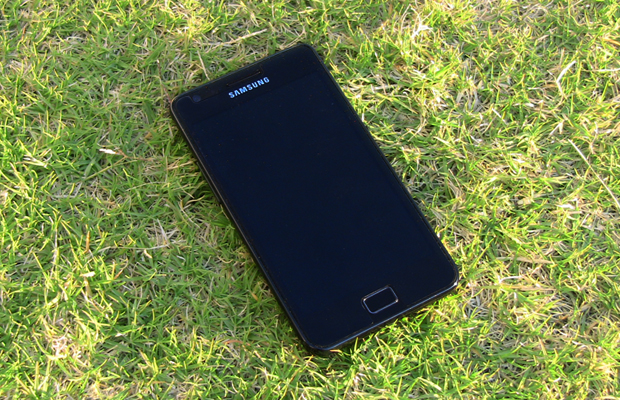
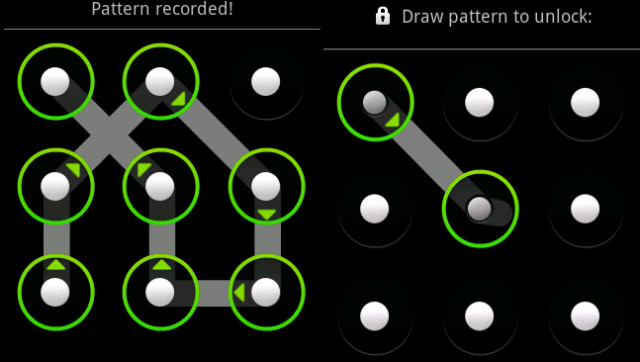
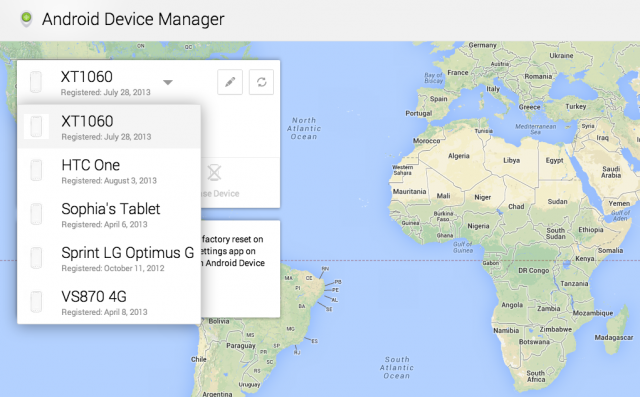

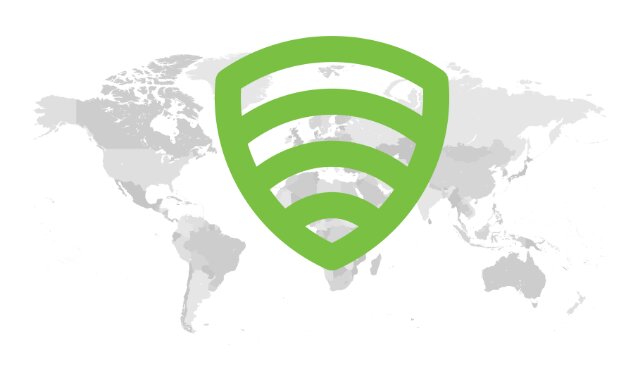

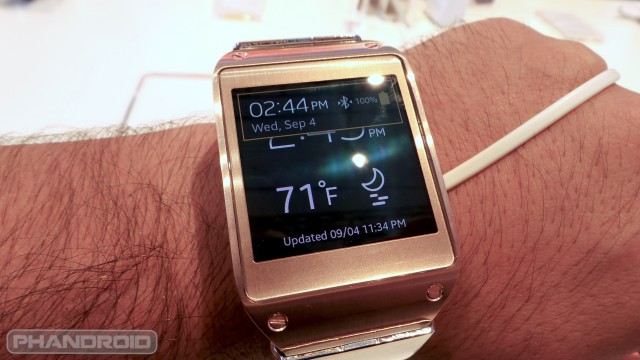
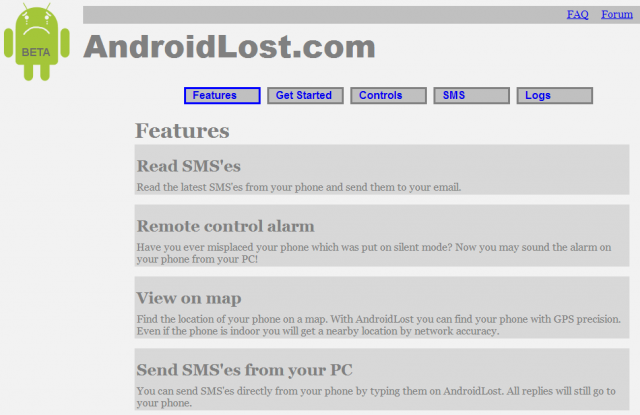
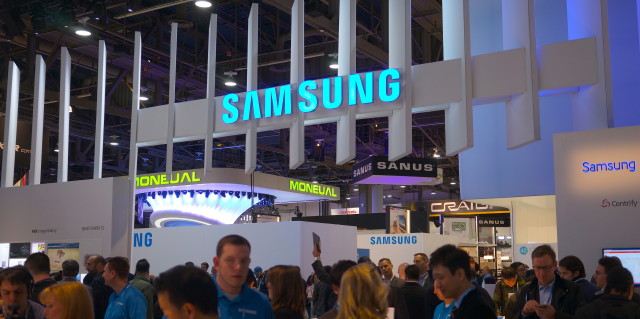









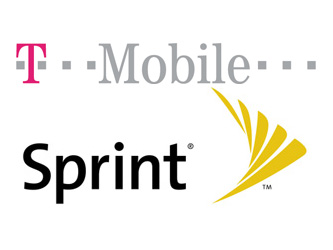










No comments:
Post a Comment